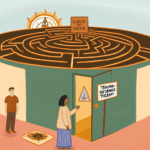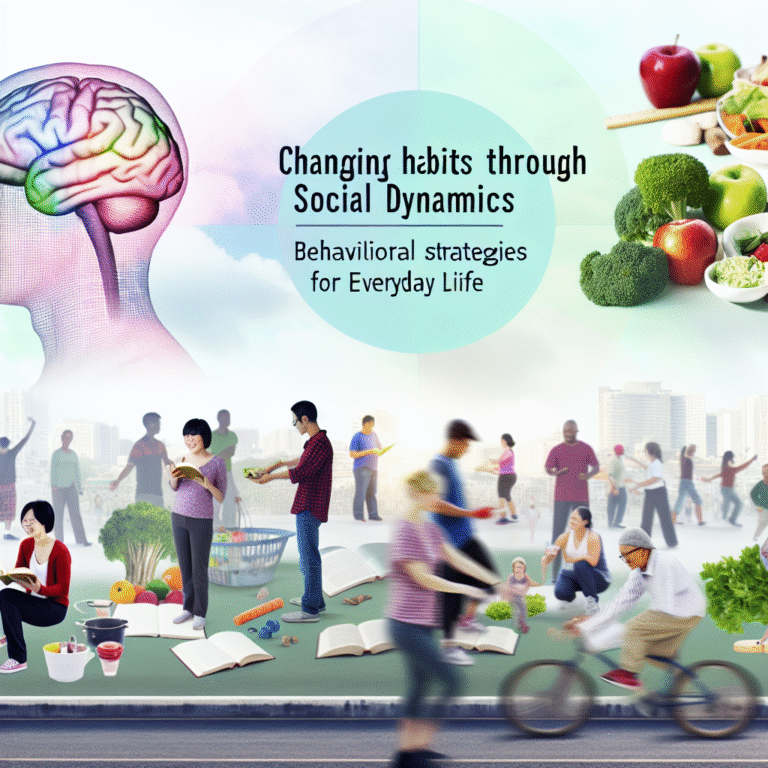
Bouncing Back: 7 Essential Strategies to Build Mental Resilience in Challenging Times
Introduction
In the face of adversity, some people bounce back stronger than ever, while others seem to falter. We often admire those who possess an innate ability to recover from setbacks, but the reality is that resilience can be cultivated. In today’s fast-paced world filled with uncertainty, mental resilience has become more crucial than ever. This article, "Bouncing Back: 7 Essential Strategies to Build Mental Resilience in Challenging Times," aims to provide you with unique insights and actionable strategies to help you cultivate this vital skill. Whether you’re experiencing personal challenges, career obstacles, or the emotional toll of global issues, these strategies will empower you to rise above.
Throughout this exploration, you will find relatable case studies, insightful data, and ready-to-implement tools that will guide you as you embark on your journey to mental resilience. Let’s dive into the art of bouncing back!
Understanding Mental Resilience
Before we delve into actionable strategies, it’s essential to understand what mental resilience truly means. Resilience is not merely about enduring hardship; it’s about thriving despite challenges. As defined by psychological experts, it is "the ability to bounce back from stress, challenge, or adversity."
Key Components of Mental Resilience
- Adaptability: The capacity to adjust to new conditions.
- Emotional Awareness: Understanding and managing your emotions.
- Optimism: The ability to maintain a positive outlook even in tough times.
- Support Systems: Building and maintaining strong, supportive relationships.
By nurturing these components, you’ll develop a solid foundation for bouncing back when life presents challenges.
Strategy 1: Cultivate a Positive Mindset
One of the most crucial steps in building resilience is cultivating a positive mindset. Optimism equips you with the mindset needed to view challenges as opportunities rather than threats.
Case Study: The Power of Positive Thinking
Consider the case of a young entrepreneur who faced numerous setbacks when launching her start-up. Initially disheartened, she began practicing positive affirmations daily, which allowed her to shift her perspective. Instead of seeing obstacles as failures, she saw them as learning experiences. This change in mindset not only led to her bouncing back from those setbacks but also fostered creativity and driving innovation within her business.
Practical Tips:
- Daily Affirmations: Write and recite positive statements about yourself.
- Gratitude Journaling: Reflect on what you are grateful for every day.
- Challenge Negative Thoughts: When faced with a negative thought, counter it with a positive one.
Strategy 2: Build Strong Support Systems
Having a robust support network is critical in times of crisis. Whether it’s family, friends, or professional connections, support systems foster resilience.
Case Study: The Role of Community
A recent study highlighted how communities that rallied together post-disaster experienced lower rates of PTSD. For example, in the wake of a natural disaster, individuals who engaged with various community support programs often found comfort and strength in collective resilience, propelling them to bounce back.
Practical Tips:
- Cultivate Relationships: Invest time in building strong, meaningful relationships.
- Join Support Groups: Participate in forums or networks that share similar interests or challenges.
- Reach Out: Don’t hesitate to express your feelings and seek support from others.
Strategy 3: Embrace Change
Change is a constant part of life, often met with resistance. Embracing change willingly can enhance your resilience and ability to bounce back.
Case Study: Career Transitions
Consider a mid-level manager who lost his job during an economic downturn. Instead of seeing this as an end, he viewed it as an opportunity to pursue a long-lost passion for art. This change allowed him to reinvent his career and discover joy, ultimately leading to a successful freelance art career.
Practical Tips:
- Stay Open-Minded: Allow yourself to explore new possibilities when changes occur.
- Develop a Flexibility Mindset: Practice responding positively to unexpected situations.
- Seek Learning Opportunities: Take courses or attend workshops to adapt to new skills.
Strategy 4: Practice Self-Care
The foundation of mental resilience lies in proper self-care. Taking care of your physical and emotional well-being equips you to handle life’s challenges more effectively.
Case Study: Self-Care Routines
A well-known author once shared how integrating daily self-care routines—like meditation, exercise, and healthy eating—transformed her ability to cope with stress. When faced with the pressures of a demanding writing schedule, she found that maintaining her self-care regime was paramount to her well-being and productivity.
Practical Tips:
- Exercise Regularly: Engage in physical activities that you enjoy.
- Mindfulness Practices: Incorporate meditation or yoga into your daily routine.
- Healthy Eating: Prioritize a balanced diet rich in essential nutrients.
Strategy 5: Develop Problem-Solving Skills
Being solution-oriented can significantly enhance your ability to bounce back. Instead of dwelling on problems, focus on identifying potential solutions.
Case Study: Innovative Problem Solving in Teams
In one company, teams faced a significant challenge in product delivery amidst supply chain disruptions. However, instead of blaming external factors, they engaged in brainstorming sessions, leading to innovative solutions that not only solved the immediate problem but also strengthened team collaboration.
Practical Tips:
- Brainstorm Solutions: When faced with a problem, list potential solutions.
- Seek Diverse Perspectives: Engage with others to gather a variety of viewpoints.
- Plan and Act: Once a solution is identified, create an action plan and execute it.
Strategy 6: Set Realistic Goals
Goal-setting can act as a powerful tool for mental resilience. Having clear, achievable goals provides direction and a sense of purpose.
Case Study: Goal-Setting for Recovery
An athlete recovering from an injury used goal-setting to structure her rehabilitation. By setting small, achievable goals each week, she maintained motivation and focus, ultimately bouncing back stronger than before.
Practical Tips:
- SMART Goals: Structure your goals to be Specific, Measurable, Achievable, Relevant, and Time-bound.
- Track Progress: Regularly review your goals and adjust them as necessary.
- Celebrate Small Wins: Acknowledge progress, no matter how small.
Strategy 7: Create a Routine
Routines can provide stability in chaotic times. Establishing a structured daily routine helps ground you, making it easier to navigate challenges.
Case Study: The Impact of Routines
A well-documented case explored how students who maintained structured study routines experienced reduced anxiety and improved academic performance during exams. By creating predictable schedules, they felt more in control, aiding in their resilience.
Practical Tips:
- Daily Schedule: Draft a daily schedule and stick to it.
- Incorporate Breaks: Ensure your routine includes time for relaxation.
- Adjust as Needed: Be flexible in modifying your routines to meet changing circumstances.
Conclusion
In conclusion, resilience is an essential skill that can be developed. By implementing these seven strategies outlined in "Bouncing Back: 7 Essential Strategies to Build Mental Resilience in Challenging Times," you can equip yourself with the tools to navigate life’s challenges more effectively.
Embrace every challenge as an opportunity for growth, foster strong relationships, and remember that it’s perfectly okay to ask for help. Engage in self-care, cultivate a positive mindset, and always strive to learn and grow from life’s experiences.
You have the power to bounce back, and with these strategies at your disposal, you’re equipped for whatever life throws at you.
FAQs
1. What is mental resilience?
Mental resilience is the ability to adapt well in the face of adversity, trauma, or stressful situations. It allows individuals to bounce back from setbacks and maintain psychological well-being.
2. Can anyone develop resilience?
Yes! While some may naturally possess resilience, it can also be cultivated through practice and the implementation of the strategies discussed in this article.
3. How long does it take to build resilience?
Building mental resilience is an ongoing process. Depending on individual circumstances and commitment to practice, it can take weeks, months, or even years to strengthen this skill.
4. What role does self-care play in resilience?
Self-care is critical for maintaining emotional and physical health, enabling individuals to better cope with stressors and challenges, thus enhancing overall resilience.
5. Is it normal to feel overwhelmed during tough times?
Absolutely. Feeling overwhelmed is a natural response to challenging circumstances. Acknowledging these feelings and applying the resilience strategies can help in managing and overcoming them.
By focusing on these strategies, you equip yourself to respond positively and maintain a strong mental framework, ultimately making life’s challenges easier to navigate. Start today, and take the first step toward bouncing back!













